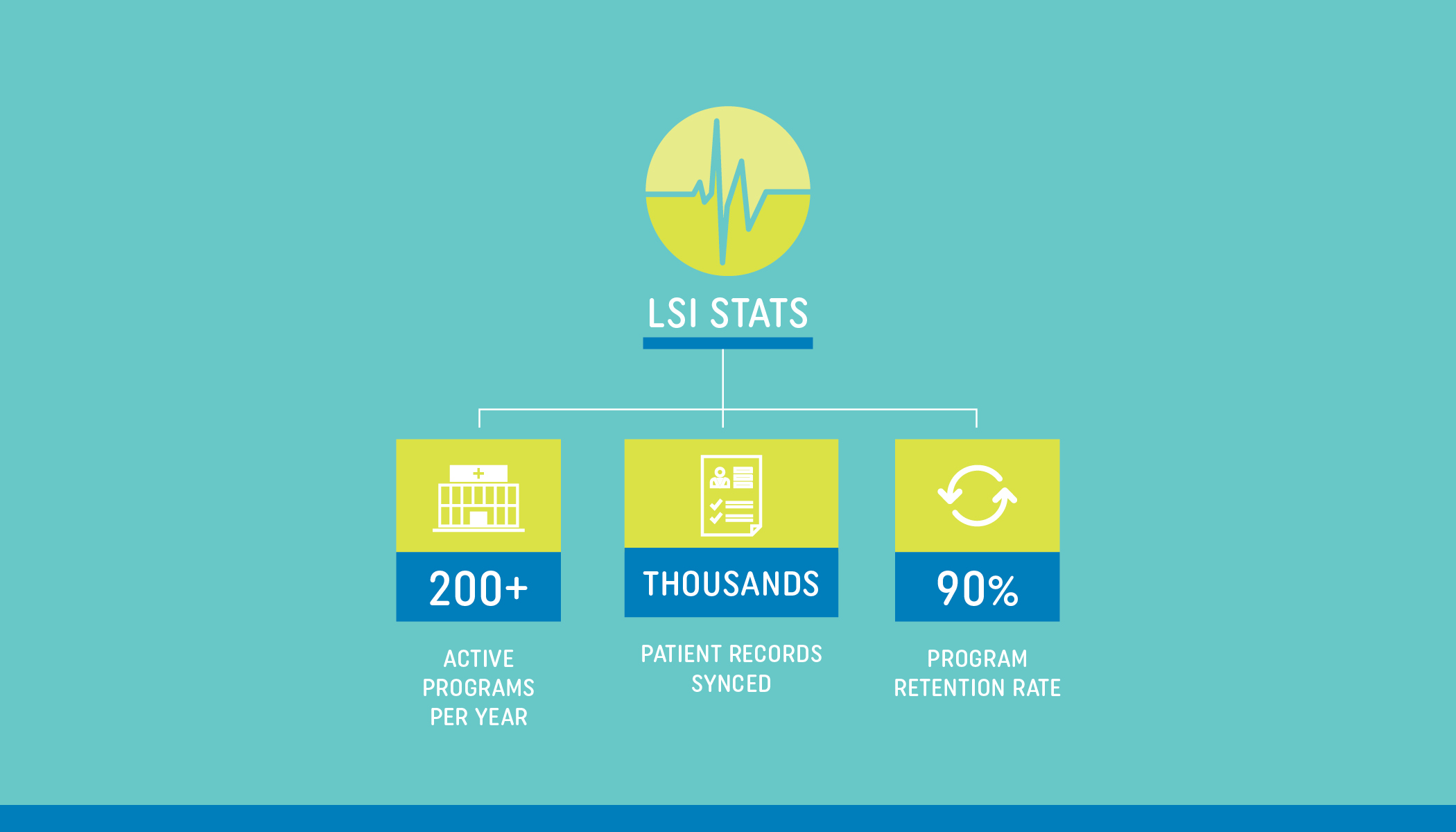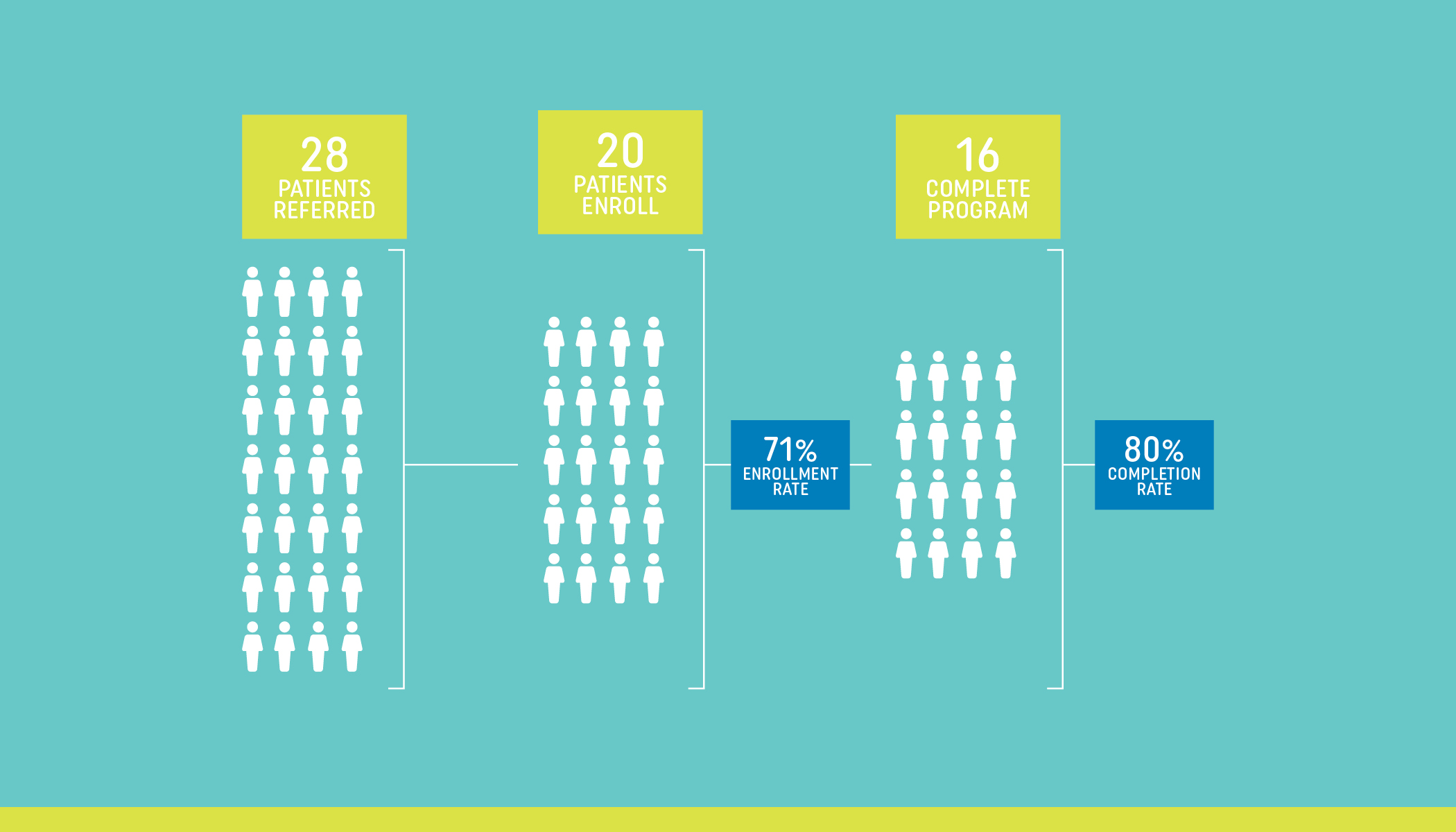Since the launch of the AACVPR Registry, one thing has remained clear, outcomes-based measurement isn’t going away any time soon. Are you set up for success? Today we’re launching part two of our new series, Roadmap to Registry 2.0, where we’re exploring the current state of the registry and where the next steps (what we’re calling, Registry 2.0) will lead the industry. Read part one of this series here.
HOW MANY REHABS ARE USING THE AACVPR REGISTRY?
The Registry is growing in national participation in both cardiac and pulmonary rehabs. With nearly 200,000 individual patient records entered, participating cardiopulmonary rehabs are leading the way in national data documentation. Perhaps what is more impressive is putting these numbers in terms of program retention rates.
As more than just a technology provider, LSI has made it our goal to actively partner with our customers for meaningful registry integration. Consider the stats:
WHY ARE SO MANY PEOPLE TALKING ABOUT THE REGISTRY?
Beyond participation, the Registry has become an increasingly hot topic for the industry as a whole. So, what’s the big deal? Here are the top two reasons you’ll want to keep up with the registry:
1. DEMONSTRATE DATA-DRIVEN SUCCESS
Having data as a tool allows cardiopulmonary rehabs to prove their value, strengthening awareness in hospital administration, referring physicians and cardiologists. Similarly, data can be used to create techniques and strategies with clinical staff to increase enrollment.
“Data is powerful. It starts with the individual patient, and then aggregate data can be used to help assess overall program effectiveness in achieving the goals of our patients and our programs. The aggregate data of all programs in the registry can help us as a discipline identify what is working and opportunities for improvement. This information can help us continually improve our practice that leads back to the original purpose – provide the best quality of patient care.”
Bonnie K. Sanderson, RN, PhD, MAACVPR – Auburn University, Past Committee Co-Chair Cardiac and Pulmonary Rehab Registry
Are you tracking readmissions, referrals, wait time, individual change, completion rates, goal completion, completion time for enrolled patients? All of these data points help inform decisions that lead to stronger programs.
How do you do this? The AACVPR Registry.
The registry allows you to pull and analyze data based on a desired time period. Let’s take a look at an example:
Those numbers begin providing you with a compelling case for proving value in an increasingly outcomes-based system.
2. PROGRAM CERTIFICATION
Program certification requirements for 2018 are soon to be officially announced, but are likely to include these key outcomes measures. The cardiac basic level performance measures are: Tobacco Use Intervention, Optimal Blood Pressure Control at Completion of Cardiac Rehabilitation, Improvement in Depression at Completion of Cardiac Rehabilitation, Improvement in Functional Capacity at Completion of Cardiac Rehabilitation. The pulmonary basic level performance measures are: Improvement in Functional Capacity at Completion of Pulmonary Rehabilitation, Improvement in Health-related Quality of Life at Completion of Pulmonary Rehabilitation and Improvement in Dyspnea at Completion of Pulmonary Rehabilitation.
How do you do this? The AACVPR Registry.
The registry puts cardiopulmonary rehabs ahead of the curve for upcoming certification requirements. LSI’s Outcomes Software includes multiple built-in assessment tools for the above listed measures for program certification and more with survey scoring capabilities. A complete list of LSI’s Cardiac Rehab outcomes data elements, which all Sync to the AACVPR Registry can be found here.
Sensing a theme? The AACVPR registry more than just a hot topic, it’s setting the stage for industry growth. Perhaps this quote says it best: 
If you’re interested in participating in the Registry or have any questions, e-mail Marissa Stanczyk.
